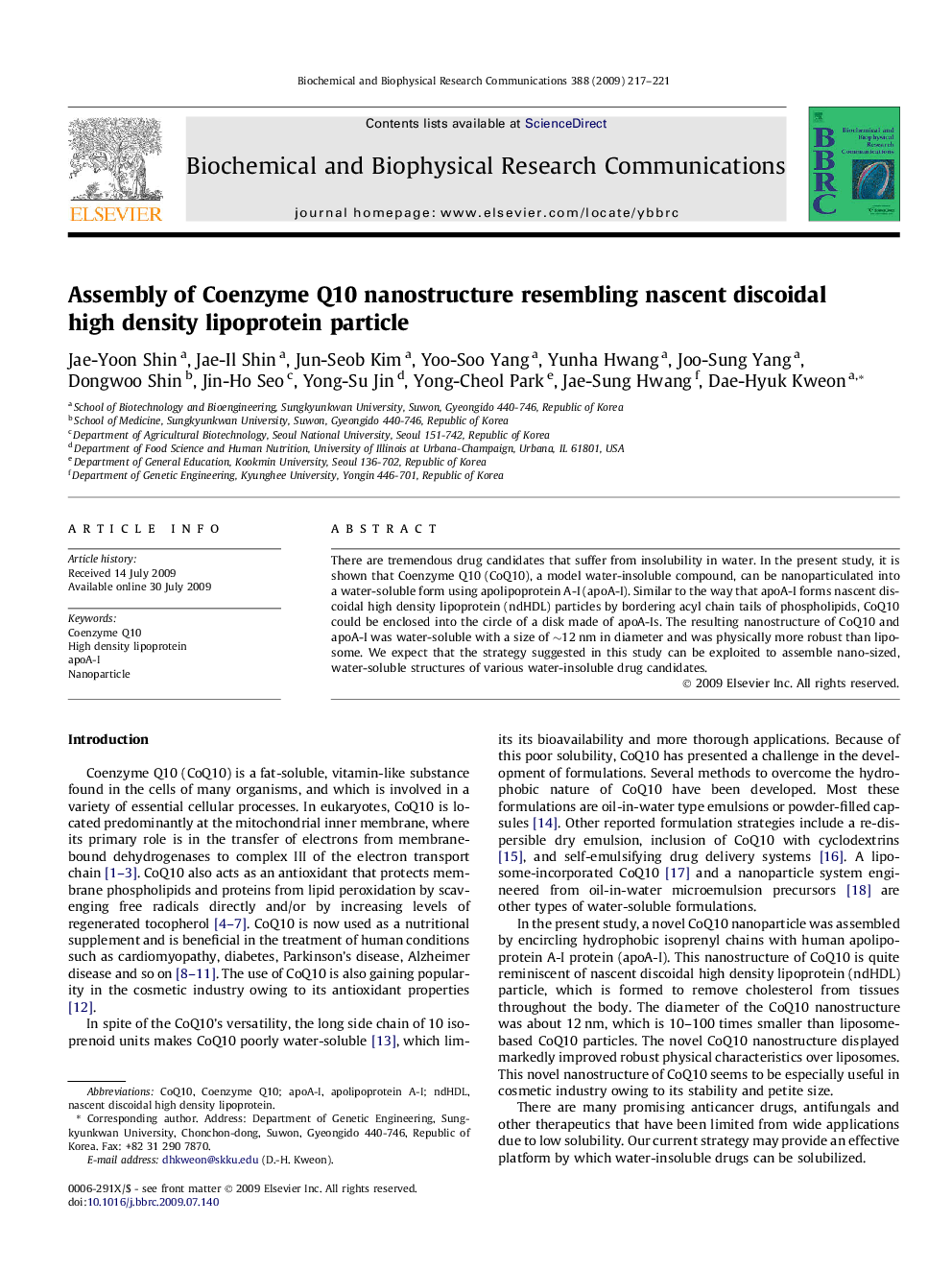| Article ID | Journal | Published Year | Pages | File Type |
|---|---|---|---|---|
| 1933025 | Biochemical and Biophysical Research Communications | 2009 | 5 Pages |
There are tremendous drug candidates that suffer from insolubility in water. In the present study, it is shown that Coenzyme Q10 (CoQ10), a model water-insoluble compound, can be nanoparticulated into a water-soluble form using apolipoprotein A-I (apoA-I). Similar to the way that apoA-I forms nascent discoidal high density lipoprotein (ndHDL) particles by bordering acyl chain tails of phospholipids, CoQ10 could be enclosed into the circle of a disk made of apoA-Is. The resulting nanostructure of CoQ10 and apoA-I was water-soluble with a size of ∼12 nm in diameter and was physically more robust than liposome. We expect that the strategy suggested in this study can be exploited to assemble nano-sized, water-soluble structures of various water-insoluble drug candidates.
